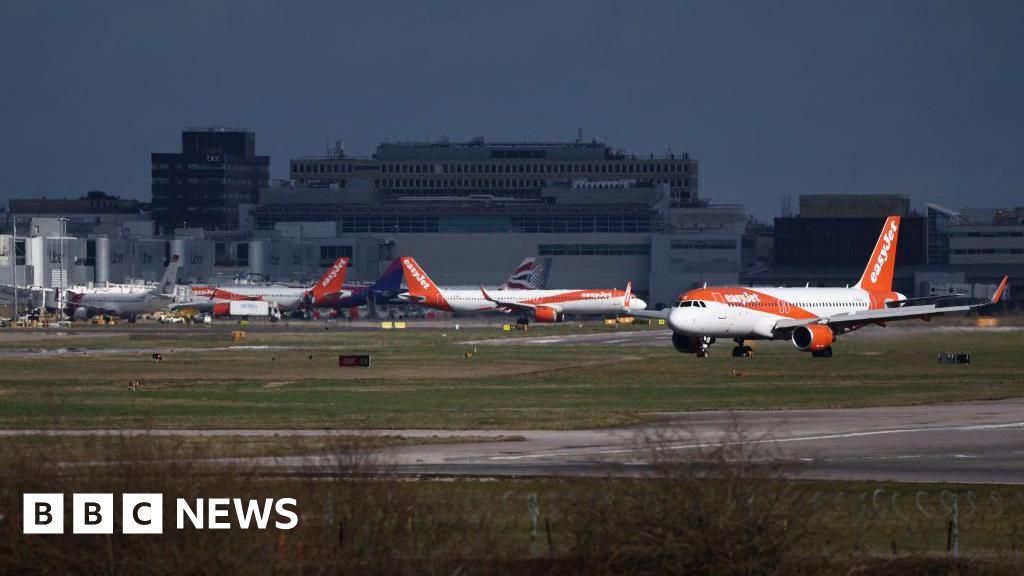ARTICLE AD BOX
By Theo Leggett
Business correspondent, BBC News
Image source, Reuters
Image caption,A 737 Max lands after a test flight at Boeing Field in June 2020
It has been called "the most scrutinised transport aircraft in history", but some critics believe Boeing's 737 Max is still not safe.
It was cleared to fly passengers again by US regulators last year, having been grounded following two catastrophic accidents.
Since then, however, a number of potentially serious problems have been reported during 737 Max flights.
Boeing insists the aircraft is both safe and reliable.
On 14 October, a 737 Max took off from Boeing Field airport in Seattle, bound for Brussels. It was a delivery flight, taking the brand-new plane to start work for its owners, the travel group Tui.
But minutes into the 5,000-mile journey, the pilots reported an urgent "flight control problem" and had to turn back. The aircraft landed safely shortly afterwards.
The issue, linked to the autopilot, was rectified relatively quickly. The plane set off for Brussels again the following day, and has been flying regularly since then.
However, this was not an isolated incident.
Emergencies
Whenever a US carrier or repair station discovers any serious failure, malfunction or defect aboard an aircraft, it has to inform the US regulator, the Federal Aviation Administration (FAA), via a so-called "service difficulty report".
There have been more than 180 such reports since the 737 Max returned to service.
Most faults were found on planes that were on the ground. But on 22 occasions, they occurred in-flight, and on four of those the pilots declared emergencies.
US pilots also declared emergencies on two further occasions due to engine failures. These events do not currently appear in the FAA's database, but have been reported on the Aviation Herald website, which lists accidents and incidents in commercial aviation.
The problems occurred in a US fleet that is still relatively small, with fewer than 160 aircraft delivered as of mid-October - some of which were grounded for several weeks early in the year after the discovery of electrical issues.
Service difficulty reports are also made public by the Canadian regulator, Transport Canada. Its database shows that the Canadian fleet of 56 737 Max aircraft has generated 19 reports, five of them relating to in-flight incidents.
The 737 Max remains under intense scrutiny. The plane was grounded for 20 months from March 2019, after being involved in two major accidents, in which 346 people died.
Image source, Reuters
Image caption,The site near Addis Ababa where Ethiopian Airlines flight ET302 crashed in March 2019
Its flight control software was modified, to remove a serious flaw implicated in both crashes. Other physical changes were made to the aircraft.
It is important to stress that none of the issues reported to the FAA and Transport Canada are directly related either to the causes of these crashes, or to the changes made afterwards.
But they do include problems with some critical systems, including the motors used to adjust the horizontal stabiliser - the wing on the tailplane of the aircraft.
There have also been faults with engines, flight control systems, hydraulics and wiring.
The horizontal stabiliser, in particular, is vital for keeping the aircraft in controlled flight.
It can be adjusted manually, using a wheel by the pilot's knee. But under certain conditions, for example if the aircraft is going too fast, that may not be possible due to the aerodynamic loads involved.
Joe Jacobsen is a former senior safety engineer at the FAA, which has been deeply critical of the way in which the agency originally certified the 737 Max.
He says the reports do give cause for concern, particularly regarding the stabiliser motors, wiring and flight control systems. Such issues, he says, are most likely to be blamed on manufacturing.
"If they are not manufacturing-related", he says "then we have a problem with the system safety analysis, as I don't believe we would have predicted this number of failures is such a short time span with such a small fleet of aircraft."
Image source, Getty Images
Gilles Primeau, a Canadian expert in flight control systems, is also alarmed. He has previously testified to Canadian lawmakers that in his opinion the stabiliser trim system on all 737 variants, not just the Max, is "obsolete", and does not have enough in-built redundancy in case of failures.
He says "a fundamental concept for safety-critical systems is that if the effects and severity of a failure cause a hazard, then the frequency of occurrence should be made infrequent enough by design... loss of horizontal stabiliser position can be catastrophic".
Ed Pierson is a former senior manager at Boeing's 737 plant, near Seattle, who has previously voiced serious concerns about manufacturing standards at the plant. He says the number of failure and defect reports is "very troubling".
"I'm concerned this is just the tip of the iceberg", he says, adding: "It makes one wonder what the airline's own maintenance reports say about the condition of these airplanes, if the mandatory reporting looks like this."
'Not unreasonable'
However, not all experts are so alarmed. Dai Whittingham, chief executive of the UK Flight Safety Committee, has also seen the data.
"I don't think it's an unreasonable rate of occurrences," he explains. "With a fleet that size, it's not an unexpected level of problems, for the length of time.
"They are complex systems, so these things happen"
Boeing did not respond to specific questions about the failures featured in the service difficulty reports.
In a statement, it said: "Since the 737 Max returned to service, airlines have flown nearly 240,000 flights around the world, and are conducting more than 1,300 flights every day.
"The in-service reliability is greater than 99%, and is consistent with other commercial airplane models".
People close to the 737 Max programme do, however, acknowledge that there have been specific issues with stabiliser trim motors, and that changes have been made to rectify them.
The BBC also understands that regular weekly meetings take place between the aerospace giant and representatives of the engine manufacturer CFM International, in part to address the root causes of failures and in-flight shutdowns.
The FAA, meanwhile, said: "When we returned the 737 Max to service, we noted that routine incidents would occur with the aircraft, just as they do with every other make and model of aircraft.
"The FAA addresses these issues through the same Continued Operational Safety process that we provide for the entire US commercial fleet. We have seen no reported incidents attributable to the redesigned automated flight control system on the Max."

 3 years ago
119
3 years ago
119








 English (US) ·
English (US) ·